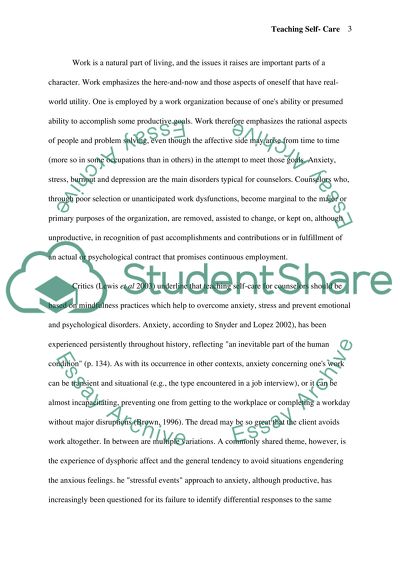Cite this document
(“Teaching Self-Care for counselors through Mindfulness Practices Essay”, n.d.)
Retrieved from https://studentshare.org/miscellaneous/1519630-teaching-self-care-for-counselors-through-mindfulness-practices
Retrieved from https://studentshare.org/miscellaneous/1519630-teaching-self-care-for-counselors-through-mindfulness-practices
(Teaching Self-Care for Counselors through Mindfulness Practices Essay)
https://studentshare.org/miscellaneous/1519630-teaching-self-care-for-counselors-through-mindfulness-practices.
https://studentshare.org/miscellaneous/1519630-teaching-self-care-for-counselors-through-mindfulness-practices.
“Teaching Self-Care for Counselors through Mindfulness Practices Essay”, n.d. https://studentshare.org/miscellaneous/1519630-teaching-self-care-for-counselors-through-mindfulness-practices.


